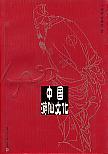|
|
|
说明:双击或选中下面任意单词,将显示该词的音标、读音、翻译等;选中中文或多个词,将显示翻译。
|
|
|
1) Nomadic Farming civilization

游耕文明
2) the nomadic culture

游耕文化
1.
Hainan culture,though a part of Lingnan culture,is a fairly independent regional one with an integration of the agricultural culture in the coastal area and the nomadic culture in the central mountainous area.
海南文化是属于岭南文化而又具有相对独立性的区域文化 ,其特点是沿海地区的农耕文化与中部山区游耕文化的交融 ,由于社会经济的差异和人口素质的差异 ,呈现出文化发展的不平衡
3) agriculture civilization

农耕文明
4) agricultural civilization

农耕文明
1.
From the development of Donggan literature,we can also look back to the distinctive Chinese image by Donggan writers and the vitality of Chinese culture that from the oral culture and agricultural civilization.
由东干文学的发展我们也可以反观东干作家笔下独特的中国形象和中国农耕文明、口传文化所拥有的生命活力。
2.
Huagu Opera Art is a product of agricultural civilization.

花鼓灯艺术是农耕文明的产物。
5) farming civilization

农耕文明
1.
The present essay,taking as its units the various forms of local culture typical of farming civilization, narrates the farming civilization s patterns,expounds their connotations,judge their values or publicizes their traits.
本文以农耕文明属性特征的乡土文化种种形态为单元 ,或记述其形态 ,或阐发其内涵 ,或审视其价值 ,或张扬其个性。
2.
Combined with the characteristics of farming civilization to explain the idea of Confucius filial piety, this paper attempts to explore in-depth studies on the main contents of filial piety and the theoretical value Confucius thoughts, as well as its referential significance to the reality.
本文以《论语》中关于孝道的记述以及孝和其它思想联系为主要研究对象,采用文献学、思想史和文化史相结合的方法,结合农耕文明的特点,对孔子孝道思想进行了阐释,深入发掘孝道思想的主要内容和理论价值以及它的现实意义。
6) nomadic civilization

游牧文明
1.
, there lived and multiplied various nomadic tribes(ethnic groups)in the north of the vast Eurasia steppe,they created the splendid nomadic civilization,succeeded and handed it down,which had formed part of the world civilization history and,at the same time,promoted its development.
在这种经济、文化的交流中,游牧文明得到了互相交融,迅速发展。
2.
The Great Wall is not only a famous military defence in the ancient China,but also a cultural boundary line,which distinguishes the agriculture civilization from the nomadic civilization.
长城是中国古代著名的军事防御工程 ,是划分农业文明和游牧文明的人文界线 ,但它同时也是重要的自然界线。
补充资料:中国游仙文化
中国游仙文化 图书作者: 汪涌豪、俞灏敏 出版社: 复旦大学出版社 isbn: 7309047346 出版时间: 2005-9第1版 印刷时间: 2005-9第1次印刷 开 本: 32 价 格(元): 20 本书综合儒释道三家思想的彼此消长,特别是作为本土化宗教的道教之于古代中国人的深刻影响,对传统游仙文化从观念形成到表现形态,做了深入细致的论述。对社会各阶层在接受他道思想和游仙活动中所体现出的生活理想和生命诉求,以及这种理想诉求背后所蕴蓄的精神价值,也给予了准确生动的畅明。最后,在与西方宗教的横向比较中,进一步凸现了这种文化在历史发展过程中,在积极和消极两个方向上对中国人人生趣味和文化精神的深刻影响。全书融事理剖析和义理发明于一体,简切而不失丰蔚,在增进人们对光怪陆离的宗教事相的了解的同时,也使之获得有关中国文化整体特征和价值取向方面更全面准确的知识。 汪涌家,浙江镇海人。复旦大学中文系博士。现为该系教授,博士生导师。主要从事中国古代文学研究,兼治古代哲学与史学。著有《中国古典美学风骨论》(1994年)、《范畴论》(1999年)、《当代视界中的文论传统》(2003年)、《批评的考究》(2003年)和《中国游侠史》(中文本2001年、日译本2004年)、《游侠人格》(大陆版1996年.台湾版1997年)等八种,主编有四卷本《中国诗学》(1999年)等三种。曾获得中国图书奖和省部级哲学社会科学优秀成果奖多项。 俞灏敏,浙江镇海人。复旦大学中文系硕士,现为上海外国语大学国际文化交流学院副教授。主要从事汉魏六朝文学的研究,亦颇涉猎释、道之书。曾编著《浪漫的中国人》等书,发表论文数十篇。 目 录 序 引言 第一章 游仙观念的历史形成 第一节 昆仑、蓬莱与神仙 第二节 长生久视之道 第三节 仙与道的融合 第二章 游仙活动的宗教形态 第一节 神仙理论的构建 第二节 营造神仙世界 第三节 道术的张扬 第三章 帝王的梦想 第一节 万寿无疆与万代一把 第二节 权欲、物欲与性欲 第三节 荒唐的代价 第四章 主人的归趣 第一节 羽化登仙般的逍遥 第二节 闭门修道与隐逸林泉 第三节 仙风道骨的韵质追求 第五章 道教徒的沉迷 第一节 洞天福地话访仙 第二节 养气炼丹与修仙法术 第三节 书符念咒的求仙秘诀 第六章 游仙文化的意义探寻 第一节 生命追求的幻境折射 第二节 取任于儒释文化的融通 第三节 生命宗教的辉光 结语 主要参考书目 后记 再版后记
说明:补充资料仅用于学习参考,请勿用于其它任何用途。
参考词条
|






